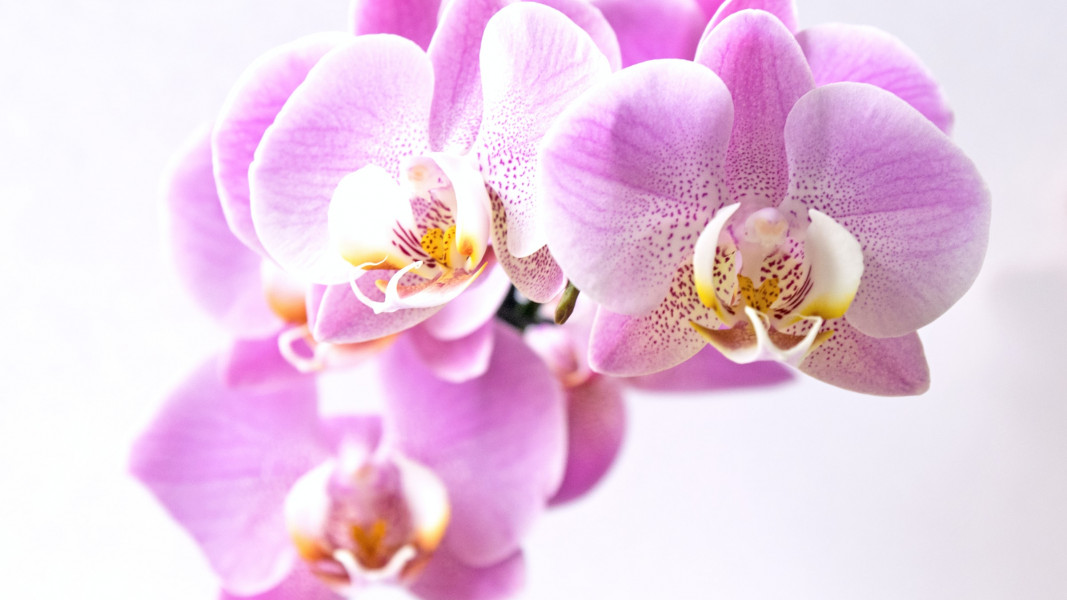Myths in the cultivation of phalaenopsis orchid
There are several popular myths about the conditions that need to provide these orchids to grow well, which make it difficult and even refuse flower lovers to grow a beautiful exotic plant. The truth is that the phalaenopsis does not need much to feel and look good.
Myth number one is that orchids can only grow in transparent pots because they receive light with their roots. In fact, like most plants, they photosynthesize through their large shiny leaves. The only reason most orchid pots are transparent is for amateur gardeners to find out more about the need for watering, as phalaenopsis roots turn silver-gray when they dry out.
The truth is that orchids feel great in opaque pots and planters, as long as they are watered properly.
Myth number two is that orchids should not be watered, but only soaked in a container of water. Although this method is the most common, it is not the only one. In their natural environment, orchids grow figuratively speaking in the air. Their so-called "aerial roots" are covered with a specific tissue that absorbs and stores moisture from the air, and then gives the plant the necessary amounts of water.
This perfect system works so well that at home the only thing to be careful about is not to overwater the plant, because the roots can rot. Therefore, if the orchids are planted in large containers that are difficult to move, they can be watered, but in moderation and only in completely dry soil.
Rules for growing beautiful orchids phalaenopsis
Planting
When planting, it is important to choose a pot that is slightly larger than the working pot or, in case you choose to plant several orchids in one pot, to provide as much space for each plant.
The plant is carefully removed from its working pot, and the roots are well cleaned of the old substrate. Wash with lukewarm water and cut the dead roots with sharp scissors (clean all dried or rotten parts). In the prepared with drainage (drainage is good to be about 1/3 of the volume of the pot, as for the unperforated vessels is absolutely mandatory) is poured substrate for orchids (usually prepared from a mixture of large pieces of pine bark, coconut fiber, moss, nutrients, etc.). The plant is carefully placed in the pot, which is compacted with additional substrate. You do not need to leave roots in the air, put them all in the soil. The orchid is watered and placed in a bright place, not exposed to direct sunlight.
Watering
In case you grow your orchids in working pots, apply the method of soaking, then drain the excess water well. Pour water into the pot and place the work pot with the orchid back in it so that the bottom is immersed in the water. Leave for a few hours, then pour the water. Ensure that the roots are completely dry until the next watering.
If your plants are planted, water like the rest of the houseplants. You need to be more careful in cases where the used pot is not drilled and the excess water cannot drain away. In such cases, you need to water with less water until you get used to the volume of the pot and the needs of the plant. Watering or soaking should be done regularly - every 1-2 weeks, only when the soil is completely dry. For an even better appearance of orchids, spray the leaves and aerial roots with water 1 to 2 times a week if they are dry.
When the plant needs watering, the roots are silvery gray, and when watered enough, they are green. If they are overwatered, they turn green-brown. The softer and lighter leaves are also an indication that the orchid is thirsty.
Exposure
One of the most important factors in growing phalaenopsis is the exposure and the amount of sunlight. This orchid is best grown in bright, indirect sunlight. In the absence of sufficient light, the plant does not bloom and its leaves darken, while direct sunlight can burn it. In case the exposure is not appropriate, place the pot at such a distance from the window that the rays do not fall directly on its leaves, or illuminate it through a transparent curtain.
Suitable temperature for growing phalaenopsis is from 60.8°F to 86°F. Falling temperatures at night stimulate orchid flowering. You can stimulate flowering by taking the pot out for a few nights (at a temperature not lower than 50°F) until a flowering stem appears. Then put the orchid in its permanent place.
Pruning
In case you do not see a dormant bud on the stem, from which a new branch may appear, after flowering the stems of the orchid are cut to the level of the rosette. Under good microclimatic conditions and proper watering, orchids do not need to be fertilized, but if this is still done, it is important to do it with orchid fertilizer and not to overdo it.
Following all the tips, you are guaranteed to enjoy beautiful orchids that will charge you with positive energy and wonderful mood.

